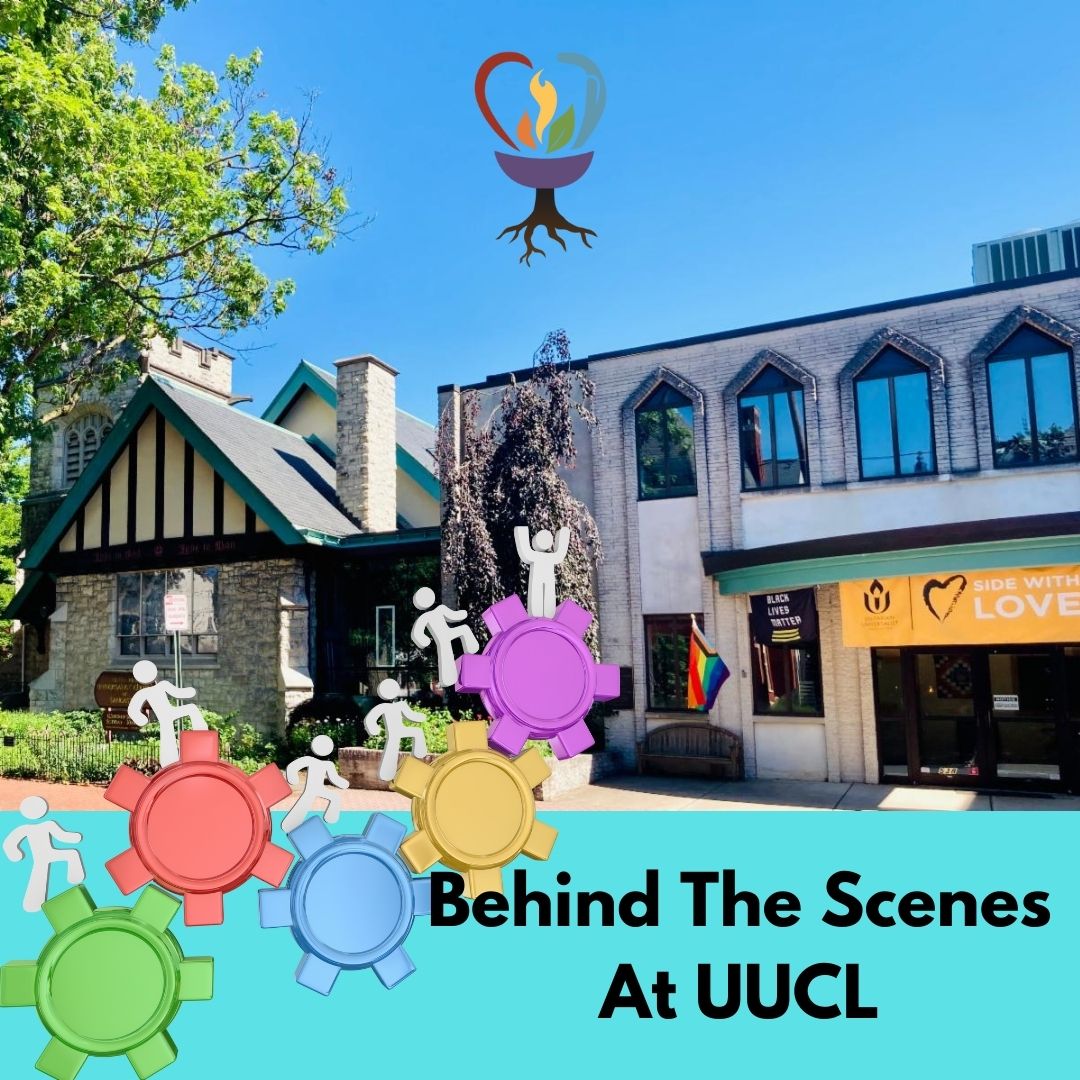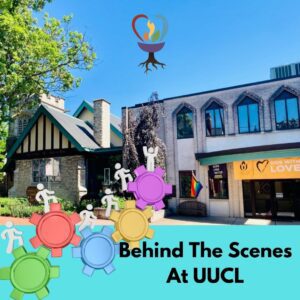Behind The Scenes At UUCL: The Budget
Behind the Scenes at UUCL
Entry #2: The Budget (Written by Fred Foster-Clark)
OK, the congregational budget. (But do we HAVE to talk about money?!) This
entry is not about WHAT’S in the budget, but HOW the operating budget is
developed and adopted. Let’s start backwards first to understand the overall
process. Our UUCL operating budget goes from July 1 to June 30, our fiscal year,
so it needs to be adopted by a congregational vote in May or June, usually at our
Spring Congregational Meeting. Before that, starting in March and continuing into
April, the Board of Trustees must review and approve the budget that is to be
presented to the congregation. That means that by March, the Financial Advisory
Committee (FAC), a Board-appointed committee (currently consisting of John
Snyder — our fearless leader, Evelyn Pendleton, Sharron Nelson, and Fred Foster-
Clark, along with Jonas Kauffman, our UUCL treasurer) must create and approve a
draft budget to share with the Board. (Aside from budget preparation, FAC’s
charge also includes monitoring the church’s budget performance throughout the
year.) So late January and much of February is spent by FAC meeting with staff
(Kelsey Holl, our Church Administrator, is especially key here), talking with
committees and congregants about what is needed for both programming for and
operating the church, and meeting among ourselves to craft the draft budget.
The operating budget has two major components – (1) the income side and (2)
the expense side. Income includes pledges and other contributions, investment
income, and earned income (e.g., auction, facility use). Expenses are typically
divided into: (2a) personnel, (2b) overhead, and (2c) ministry and programming.
Personnel is by far the largest category of expense for UUCL accounting for about
70% of the budget and is largely fixed. 1 Overhead expenses are what it costs to
keep the building operating – everything from heat, water, and light to
maintenance contracts, office expenses, insurance, and postage. While less
“fixed” than personnel costs to some extent, some of these are not really all that
discretionary if we want to operate as a church and have a place for ministry and
1 While personnel costs are largely fixed in the sense that they are contractual and not discretionary, the budget
reflects anticipated full staffing for the coming year. Over much of the last few years, however, we have had
periods with one or more staff vacancies or reduced hours. This is the major reasons why we have typically ended
each recent fiscal year in the black (i.e., income matching or exceeding expenses) even though we have
consistently passed deficit budgets and fallen short of our stewardship goals.
programming. These costs take up a large chunk of what remains in our budget,
ranging from 21% to 25% over the last few years. The last category of expenses is
ministry and programming which includes worship/music, faith development,
UUA dues, outreach (“community beyond”), and in reach (“church life”).
So that’s a quick overview of the budget process. If you want more detail or have
other questions, feel free to speak with any of us on FAC. We are also down a
member and look to lose two of our long-serving members this summer, so
volunteers are always needed!



